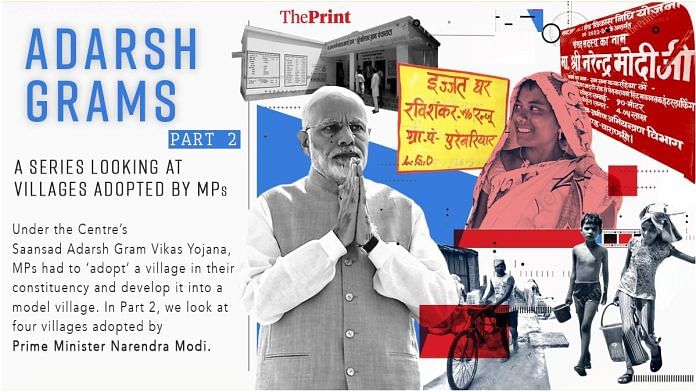Varanasi: Aspirational rural India comes to life inside the brightly painted classroom of the government primary school in Varanasi district’s Kakrahiya village. Here, instead of a dusty blackboard, students learn from a large screen, guided by their teacher. This UP village, once known mainly for its wrestlers and akharas, has leaped into modernity since being ‘adopted’ by Prime Minister Narendra Modi. But outside, a different reality unfolds.
“When will this water tank work?” hollers Chhaya Devi, one of the 1,100-odd residents of Kakrahiya village. It’s a question she throws at any newcomer. Within minutes, other villagers gather around, their voices a chorus of frustration, as they stand in the shadow of a huge steel-and-concrete water tower. The board outside says it was built at a cost of Rs 1.45 crore and completed in January 2019, but it has barely yielded even a trickle of water since then, villagers claim. “We have to survive on borewell water,” complained resident Vikas.
PM Modi adopted Kakrahiya in 2017-8 under the Saansad Adarsh Gram Yojana (SAGY), which tasked parliamentarians to develop adarsh gram (ideal villages) in their constituencies. Per the guidelines, each MP was expected to develop three gram panchayats by March 2019 and an additional five by 2024. Since the scheme’s launch in October 2014, Modi has adopted seven villages in his constituency Varanasi—Kakrahiya, Jayapur, Nagepur, Parampur, Pure Bariyar, Pure Gaon, and Kuruhua.
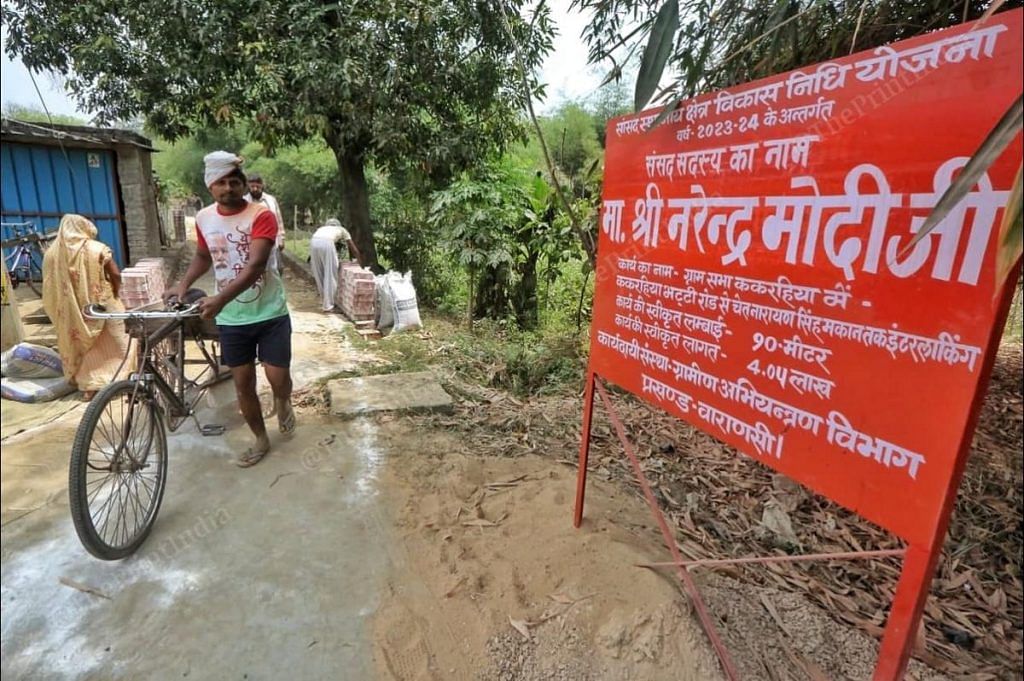
While SAGY’s implementation has seen mixed results, the question remains, have villages under Modi’s direct oversight fared better than others?
To get a clearer picture, ThePrint visited four of these seven villages earlier this month—Jayapur, Kakrahiya, Pure Bariyar, and Pure Gaon. All have received a physical makeover, with beautifully painted school buildings, panchayat bhavans, anganwadi centres, and new concrete and interlocking roads. There are also billboards crediting PM Modi wherever SAGY projects have been completed.
Since being taken under the PM’s wing, these villages have pulled in increased funding from private companies, including corporate social responsibility (CSR) contributions from giants such as Reliance Foundation, Vedanta, and Hindustan Petroleum Corporate Limited (HPCL).
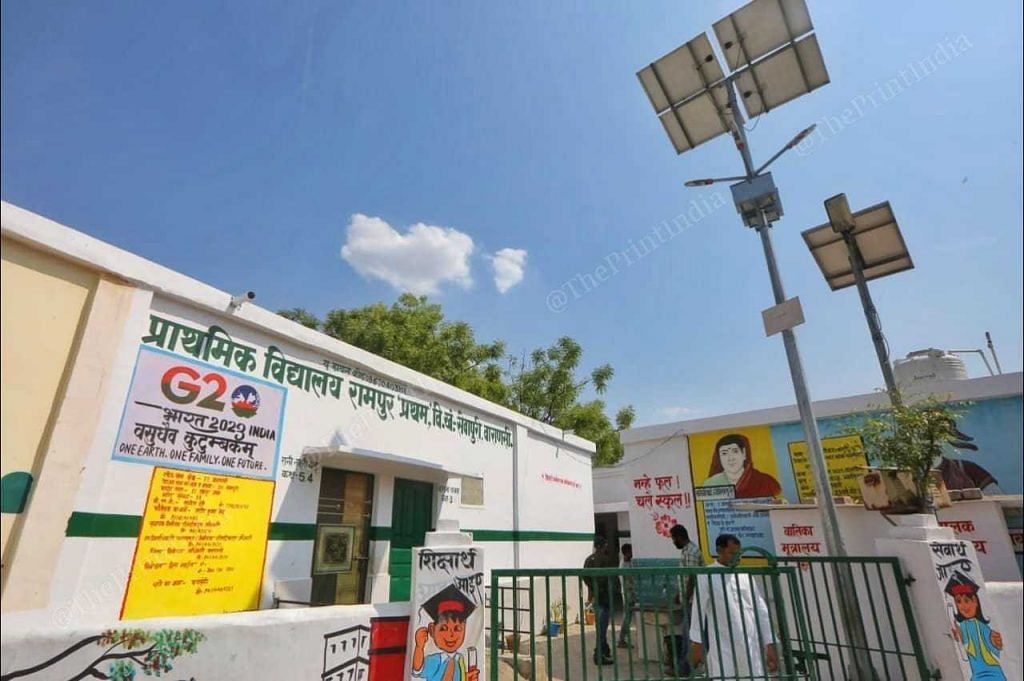
Last year, Pure Bariyar even hosted 29 foreign parliamentarians from various countries as part of the Gen-Next Democracy Network Programme by the Indian Council of Cultural Relations. The visitors interacted with villagers, purchased products from self-help groups, and posed for photos flaunting colourful garlands.
However, an independent journey through these villages reveals cracks in this curated image. Although villagers express satisfaction with their upgraded facilities, they still struggle to hold local officials accountable for implementing schemes and sometimes have trouble accessing basics like rations, streetlights, and water, depending on the village.
Also Read: Red lipstick, macroni dinner, and the smell of aspiration in this OBC family in UP
ATMs & open gyms to Kalpana Chawla classrooms
Less than a decade ago, Jayapur, Modi’s first adopted village, lacked basic amenities such as an ATM, bank branch, post office, and even a bus stop. A 2015 baseline survey identified these shortcomings and charted a course for improvement in the village.
Most goals have been met. Jayapur, home to around 3,200 people now boasts a renovated panchayat office, an open gym, a public washroom, two banks, and an ATM. “The village has been transformed. Everywhere you look, there’s transformation,” Jayapur’s pradhan Raj Kumar Yadav told ThePrint.
The change isn’t just physical, it’s social too. The school in Pure Bariyar, for instance, has classrooms named after women icons such as Rani Lakshmi Bai and Kalpana Chawla.
A trip through these villages reveals “izzat ghars” (toilets), all marked with the names of the women who live in the houses. Since they were adopted, Jayapur has seen 327 toilets built, Nagepur 507, Parampur 639, and Pure Bariyar 233.
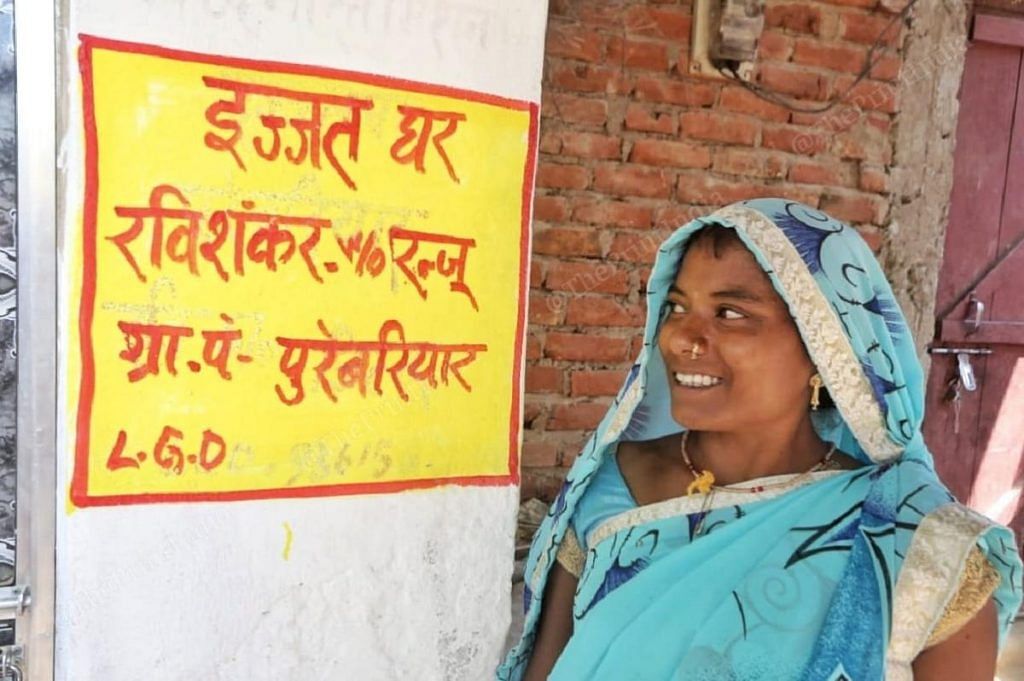
“We had to go to the fields before we were given washrooms. But since PM Modi adopted the village, I feel more secure,” said Pure Bariyar resident Ranju, proudly showing off her name outside her izzat ghar.
In Kakarahiya, women from self-help groups show off sarees made on their village power looms. “Being a part of these groups has given us a lot more independence,” said resident Rita Devi. “Earlier, we were confined to our houses, but now we work and talk to people.”
Kakarahiya and Jayapur even boast ‘libraries’ built by the Raja Rammohun Roy Foundation, although these are currently just orange bookshelves with about 20 books each.
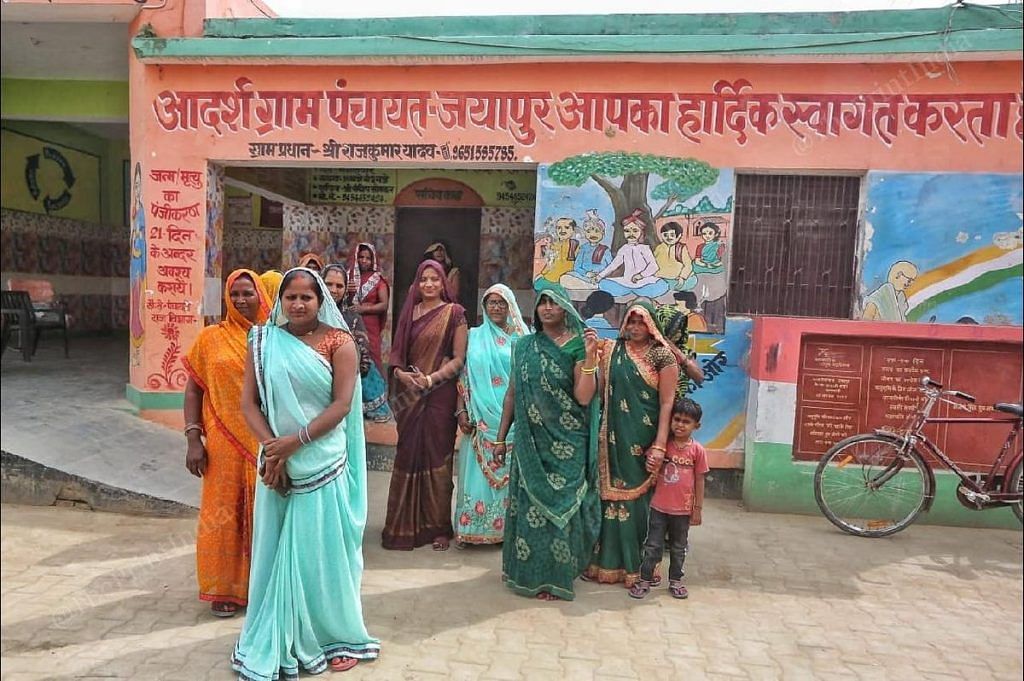
Officials seem to be constantly on their toes when it comes to these seven villages. A 12 April progress report by Varanasi district authorities on all seven villages noted down all the work done in them and all that remains to be done—from roads to electrification to the implementation of various government schemes.
“Before PM Modi adopted the villages, we used to get a very low budget. So, all the development work couldn’t be done,” said Arvind Singh Patel, de facto pradhan of Pure Bariyar. “But since he adopted this village, the gram sabha has received so much CSR funding that we have hardly any development work left. The Prime Minister has sanctioned a Rs 1.5 crore CRS budget for whatever few development projects are left. After the elections, no development work will be left in this village.”
But not everything is idyllic. Despite claiming amenities unlike any other in the country, villagers are vocal about issues that haven’t been addressed and which significantly affect their quality of life.
Water woes
Back in Kakrahiya, villagers are tired of erratic water supply and irate about the non-functional tank looming overhead. “They have spent Rs 1.45 crore on this, and there is no accountability for it. It hasn’t ever worked properly. I can give it in writing, ask anybody,” said resident Jitendra Kumar Patel, gesturing toward the water tower.
Frustrated, residents confronted Suraj Kumar Gond, husband of the village pradhan, Pooja. When Pooja was asked when she was elected as the pradhan, somebody had to whisper the answer to her.
In 1993, a constitutional amendment reserved one-third of gram pradhan or sarpanch positions for women. However, cases like Pooja’s echo the reality depicted in the popular web series Panchayat—the husbands or male family members usually run the show.
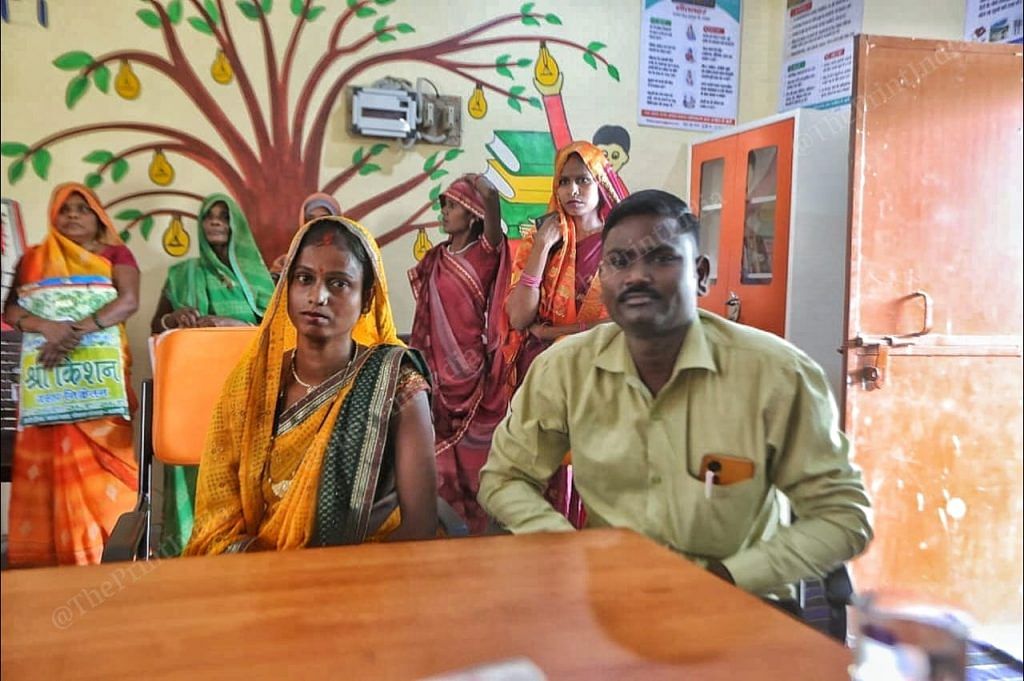
Aware of this equation, the villagers demanded answers from Suraj Kumar instead. Nobody was certain what the problem was, and why the tanker had not begun supplying water to the houses despite being marked complete in 2019.
“It (the pipelines) also leaks everywhere. If they switch it on right now, you’ll see the water spreading everywhere,” Patel alleged.
Suraj Kumar, however, blamed the Varanasi Jal Nigam (water department) for delaying handing over control of the water tank to the village administration.
“It has only been a few days that I have taken charge of the tank. It has been working since then. Before this, an engineer from the Jal Nigam had charge and their officials were running it. They were running it per their whims and were filling the nearby pond instead of giving water to the villagers,” he claimed. “Wherever it did not have connections, and water was leaking, we had fixed it.”
The villagers attested to the fact that the tank has been working for a couple of days, but distrust over its continued functioning loomed large. They demanded more answers. “You’ve been the pradhan for 3-4 years now. Why didn’t you take over before?” Jitendra Kumar asked.
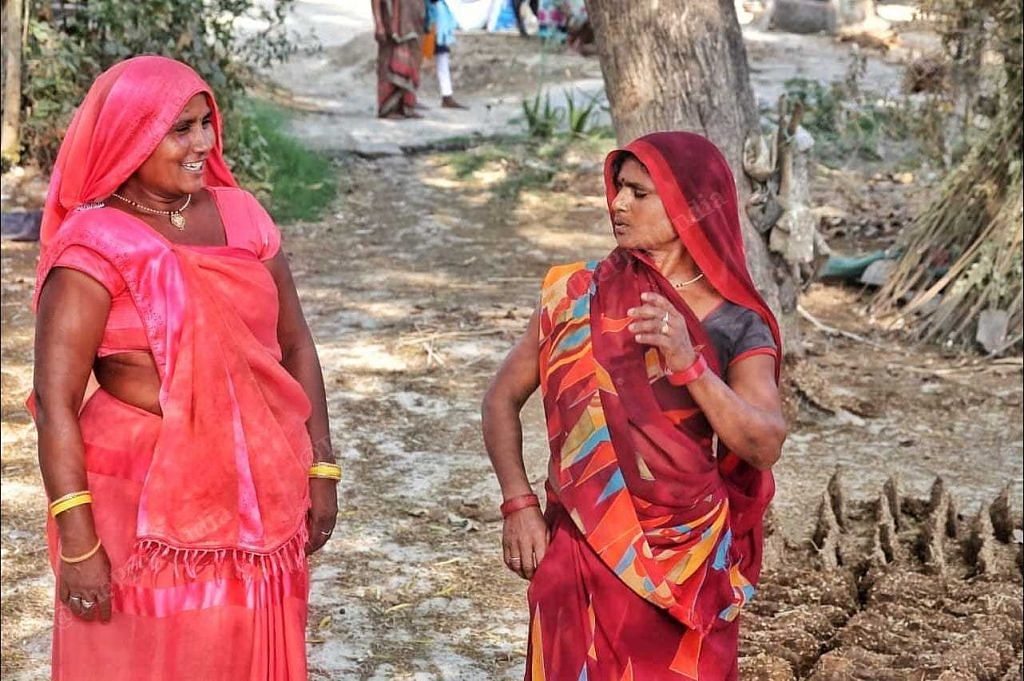
In Pure Gaon, too, water is a problem. Resident Chinta Devi claimed she was not aware of PM Modi having adopted her village. “I use the chapakal (hand pump) near my house. I don’t get water in my house.”
Her neighbour Nirmala Devi chimed in. “Nothing has changed since he adopted us, the village is still the same. That temple there also doesn’t get water, it doesn’t even have a hand pump,” she said. “How do I say he has adopted us? We haven’t received any benefit.”
No ration for two months
Water wasn’t the only worry in Kakrahiya—food was too. Several villagers claimed they hadn’t received rations for two months before ThePrint’s visit on 13 April.
“Why haven’t we received ration for two months? They have taken our thumbprints,” complained a resident to Suraj Kumar, the pradhan’s husband.
Under the Pradhan Mantri Garib Kalyan Anna Yojana, poor families receive 5 kg of food grains each month. However, the residents alleged that the kotidar (ration distribution agent) would make them mark their biometric thumbprint for ration, but not release the foodgrains.
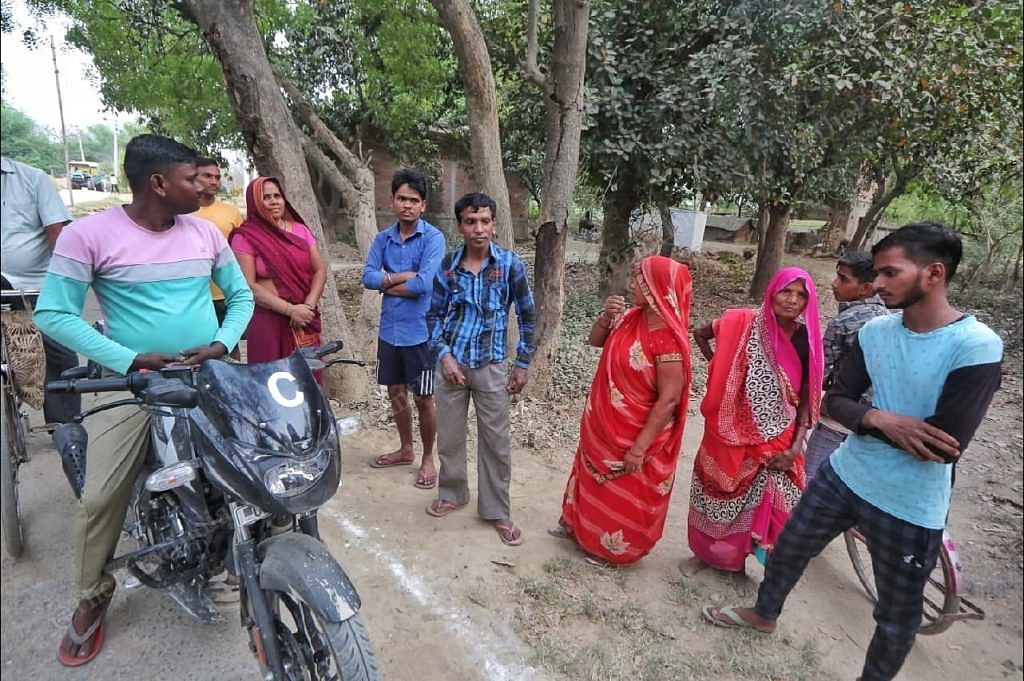
“The kotidar makes us all check into the system with our thumbprints and gets his work done. But (he) doesn’t give everybody ration. I put my thumb twice, and got a message that you got ration, but I never received it,” another resident alleged.
Suraj Kumar claimed he filed a written complaint earlier this month with the Block Development Office regarding the non-supply of rations, and that he has been assured of proceedings against the errant staff.
Few streetlights, sanitation issues
Both Kakrahiya and Pure Gaon lack streetlights on most of their lanes. A solar streetlight, however, stands tall in Kakrahiya, with a small board crediting PM Modi for it and declaring that it was put up in 2018-19 at a cost of Rs 21,700. But Vikas, a resident, told ThePrint that the battery powering the street light was stolen at some point and it hasn’t been working since.
Residents shared their frustration with the lack of lighting, citing safety concerns when out and about at night. “A girl was returning home from coaching a few months ago. It was dark. She got hit by a cycle and got injured very badly,” Chhaya Devi said, pointing to a trisection of roads. “We’ve been telling the pradhans, but nobody has gotten it done yet.”
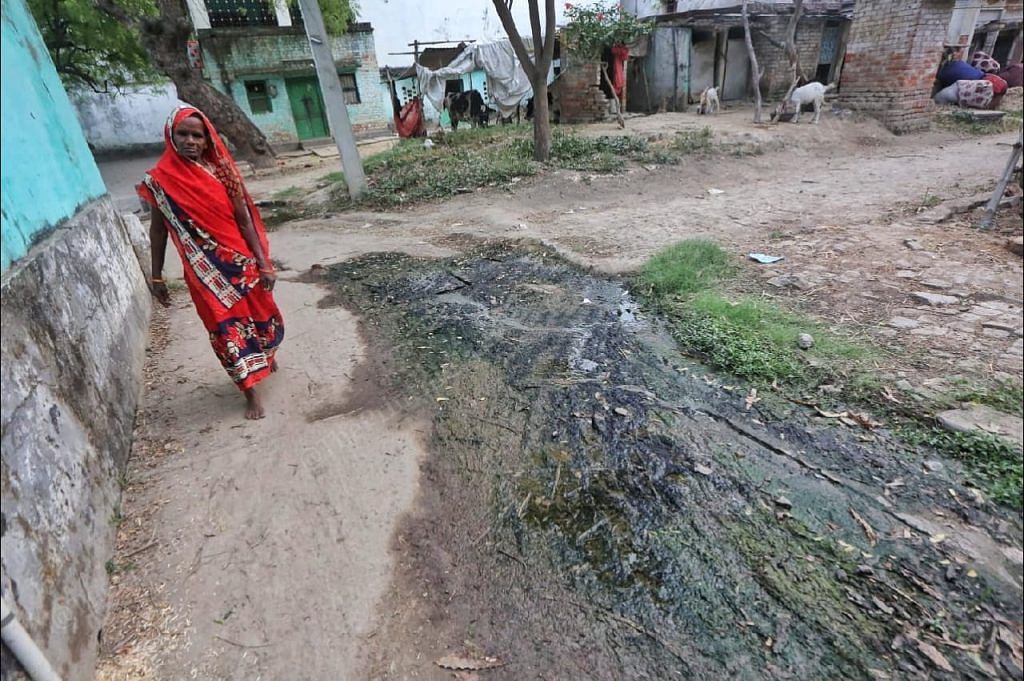
While fresh paint and neat yards make many homes look inviting in these villages, pockets of filth remain. For instance, overflowing open sewers within Kakrahiya plague several houses, creating a foul stench and attracting mosquitos.
‘Missing’ houses
In Pure Bariyar, several residents showed off their homes or proudly displayed certificates showing their allocation of awas (houses) under the Pradhan Mantri Awaas Yojana Gramin (PMAY-G) scheme.
Under this scheme, 15 houses were completed in Jayapur in 2022-23, three in 2021-22 and another nine in 2020-21. Similarly, several awas have been built in other villages too. Officials in Varanasi, on the condition of anonymity, told ThePrint that through CSR, a total of 192 additional houses have been sanctioned for all the seven villages.
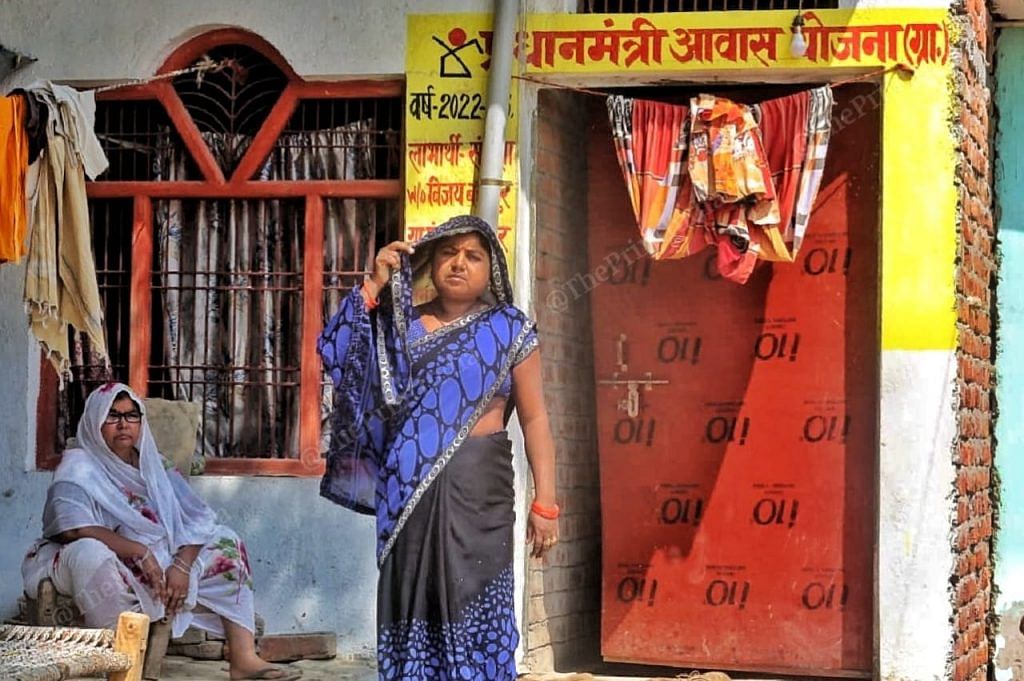
However, on-ground implementation presents a different picture. In Kakrahiya, for example, the exterior wall of a “house” announced it was built in 2020-21. But all that stood there were four walls, a staircase, and a washroom, without an entry gate or concrete ceiling. Bricks and cement were still scattered inside.
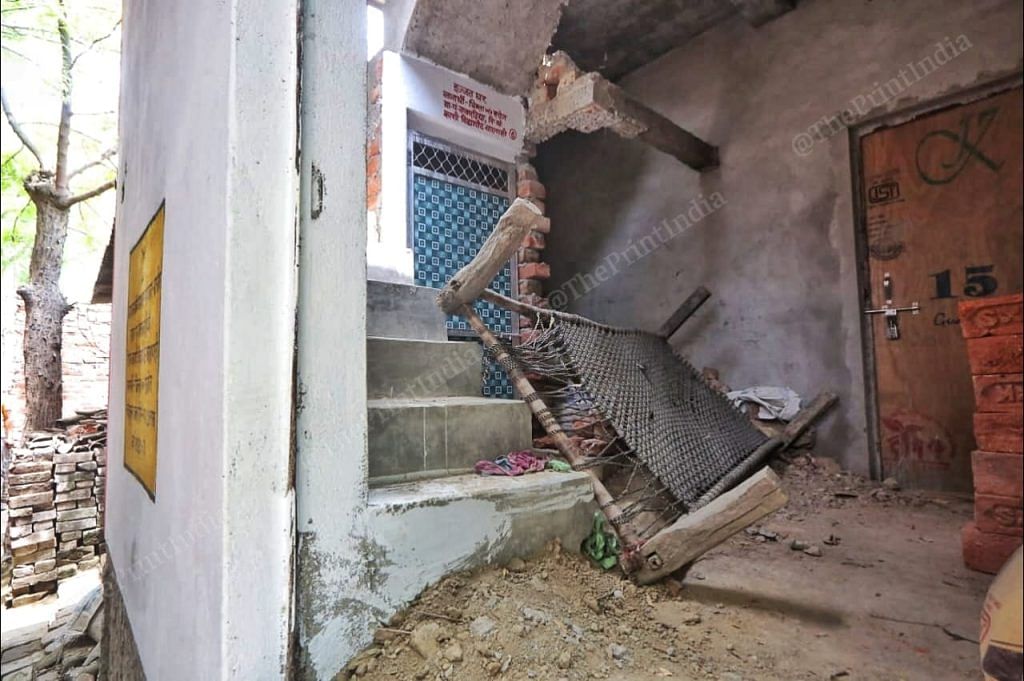
In Pure Gaon, Anil Kumar Patel, who relies on a manual handicapped tricycle to get around, claims he received a house a year ago. However, he hasn’t been able to move in because he lacks the funds to make it habitable. According to Patel, he hasn’t received his MGNREGS payment for the 95 days of labour he completed after the house was allocated to him.
“I haven’t moved in because I wanted the money to come in so that I can get the house fixed and can start living in it,” Patel said, presenting his and his wife’s Adhaar card and bank passbook.
Beneficiaries of MNREGS receive 95 days of employment at a daily rate of Rs 90.95 for unskilled labour.
“I’ve been checking but the money hasn’t come to me,” Patel said. “I check it every day.”
(Edited by Tony Rai)
Also Read: Crocodile-infested waters, jungles, no network — covering UP villages on India-Nepal border


